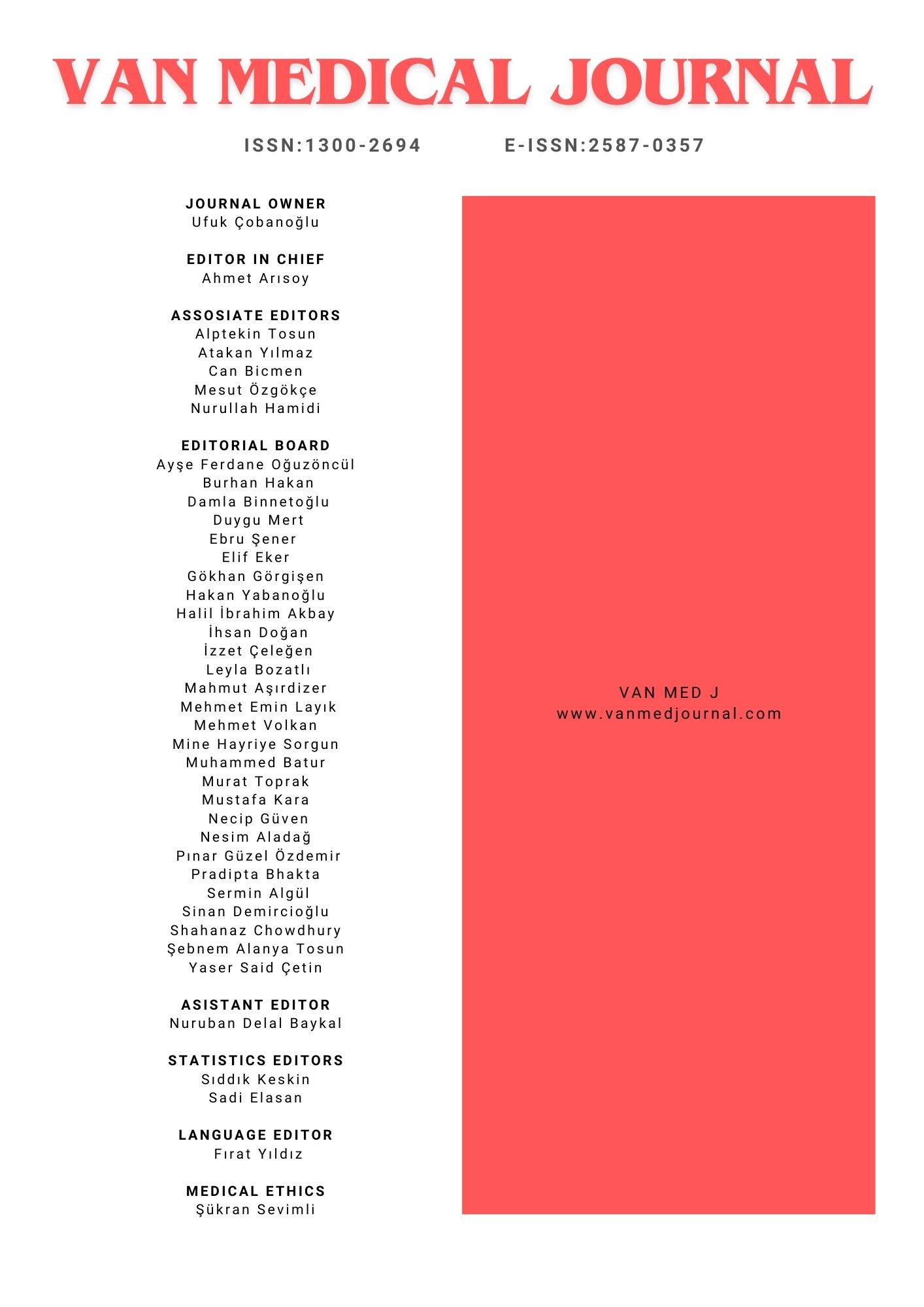Echinococcus Multilocularis İnfeksiyonuna Bağlı Budd-Chiari Sendromu: Bir Olgu Sunumu
A.Cumhur Dülger1, Aydın Bora2, Rafet Mete3, A. Mahir Gündüz41Yüzüncü Yıl Üniversitesi Tıp Fakültesi Gastroenteroloji ABD.2Yüzüncü Yıl Üniversitesi, Dursun Odabas Tıp Merkezi, Radyoloji Anabilim Dalı, Van
3Departments of *Gastroenterology
4Radiology, YüzüncüYıl University Faculty of Medicine, Van,
Hepatic vein obstruction is associated to a clinical and pathological presentation named the Budd-Chiari syndrome, including hepatic sinusoidal dilatation and congestion, ascites and abdominal pain, as a result of hepatic outflow block. Echinococcal disease is caused by infection with the metacestode stage of the tapeworm Echinococcus. The most common presenting symptoms include malaise, weight loss, and right upper quadrant discomfort due to hepatomegaly. Hepatic vein invasion, typically associated to Echinococcus multilocularis has rarely been described .We provide here a detailed observation of a acute Budd-Chiari syndrome due to Echinococcus multilocularis infection. Detection of Budd-Chiari syndrome in case of Echinococcus multilocularis infection is important for the appropriate treatment.
Keywords: Echinococcus multilocularis, Budd-Chiari Syndrome.Budd-Chiari Syndrome Due To Echinococcus Multilocularis Infection: A Case Report
A.Cumhur Dülger1, Aydın Bora2, Rafet Mete3, A. Mahir Gündüz41Yüzüncü Yıl Üniversitesi Tıp Fakültesi Gastroenteroloji ABD.2Yüzüncü Yıl Üniversitesi, Dursun Odabas Tıp Merkezi, Radyoloji Anabilim Dalı, Van
3Yüzüncü Yıl Üniv. Tıp Fakültesi İç Hastalıkları ABD, Van
4Radiology, YüzüncüYıl University Faculty of Medicine, Van,
Hepatik ven obstruksiyonu; Budd- Chiari Sendromu olarak adlandırılan ve hepatik sinuzoidal dilatasyon, konjesyon, asit ve karın ağrısına neden olan klinik ve patolojik bir durumdur. Ekinokokkal hastalık ekinokokun metasestod evresiyle infeksiyon sonucu gelişir. En sık başvuru semptomları; halsizlik, kilo kaybı ve hepatomegaliye bağlı sağ üst kadran ağrısıdır. Echinococcus multilocularis infeksiyonuna bağlı Hepatik ven invazyonu nadiren tanımlanmıştır. Bizler burada E. Multilocularis infeksiyonuna bağlı Budd – Chiari sendromunu tanımlıyoruz. Bu infeksiyonun seyrinde Budd Chiari sendromunun tesbit edilmesi uygun tedavi için önemlidir.
Anahtar Kelimeler: Echinococcus multilocularis infeksiyonu, Budd-Chiari Sendromu.Manuscript Language: English

